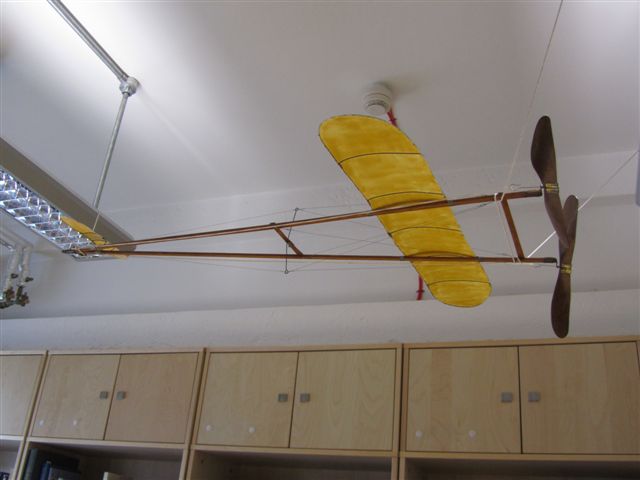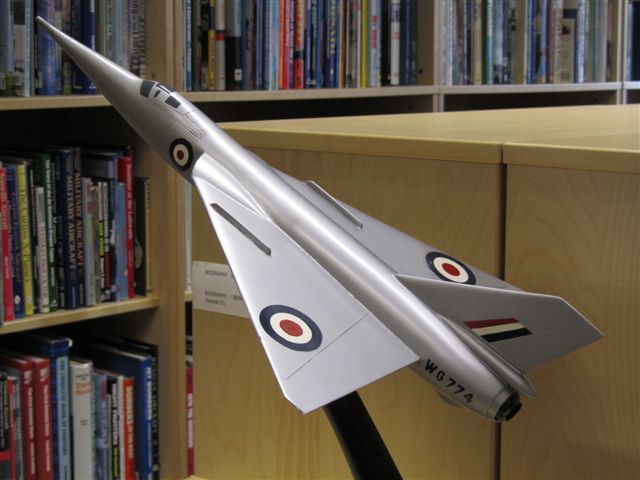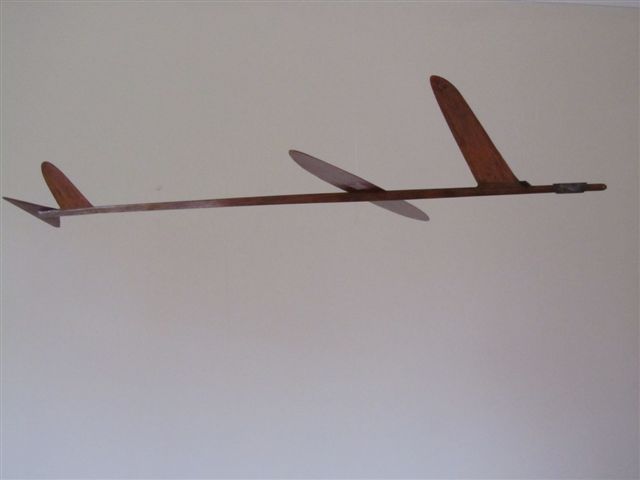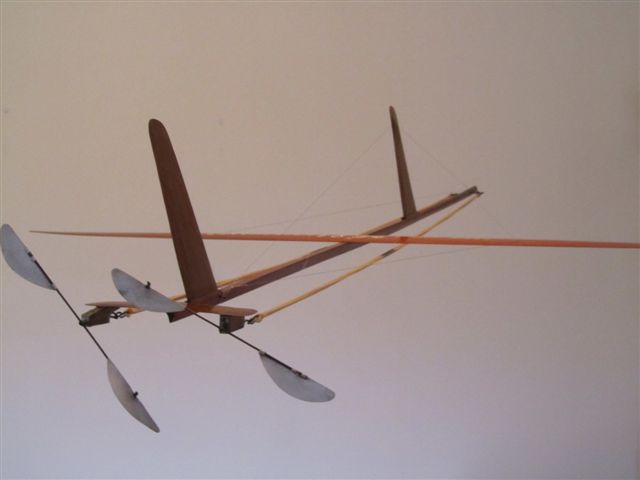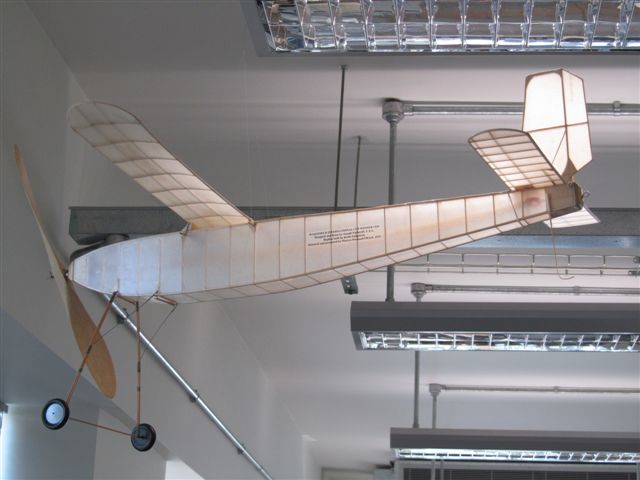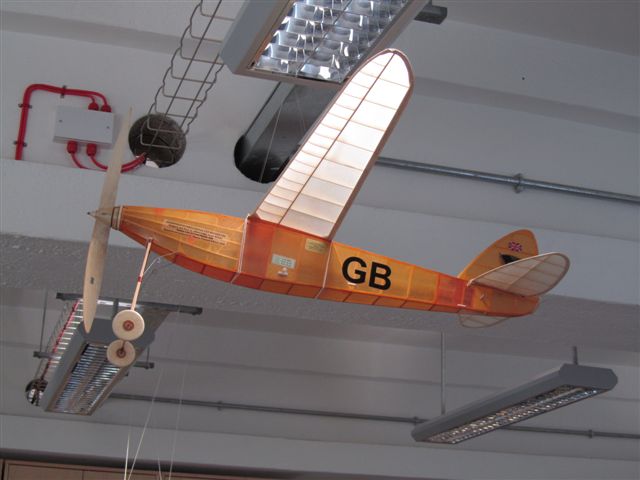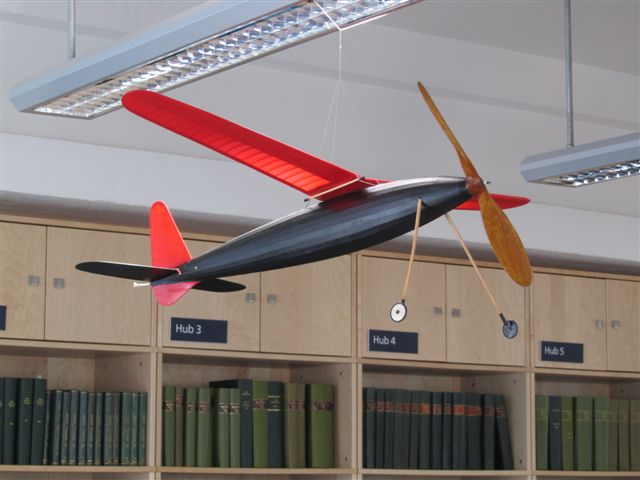|
|
|||||||||||||
|
Christchurch and District Model Flying Club |
|
MODELS ON DISPLAY AT THE NATIONAL AEROSPACE LIBRARY By Martyn Presnell
|
|
The National Aerospace Library (NAL) is located at Farnborough in the location of the original Royal Aircraft Establishment (RAE). The buildings remaining have been well restored, and the original airship shed is preserved close by. The Library is a facility of the Royal Aeronautical Society (RAeS), its headquarters being in London. The library is for the use of society members wishing to study or research the aeronautical sciences or history. However members of the public can visit during normal opening hours to browse this fine collection of media. A full collection of Aeromodellers have been bound and sit on the shelves of the library with much else of interest to model builders and flyers.
Some months ago the NAL let it be known that they would welcome historic model aircraft for display alongside their books and technical data. Indeed some historic models were already hanging there. As some modellers may know I have been restoring Wakefield models for some years and as a member of the RAeS for more than fifty years, it seemed that I was well placed to offer assistance in their project. The NAL are in touch with Roy Tiller and Roger Newman (of Bournemouth MAS) so that magazines and books can be shared with the David Baker Heritage Collection of aeromodelling material. As a personal task I have undertaken restoration of Lanchester’s original experimental models of 1894 and presented models to illustrate the early history of the Wakefield Cup. At the moment I am seeking a Jaguar Wakefield as designed by E.W.Evans and flown by Roy Chesterton to win the Wakefield Cup in 1948 for Great Britain. Should anyone be able to donate a Jaguar in reasonable condition I will be pleased to undertake its restoration to exhibition standard. (Please contact me on 01590 677146). The reason for seeking a Jaguar is that 1948 was the last occasion that GB won the Wakefield Cup outright. There is very little further space for models to be hung, however if any truly historic models are to hand I am sure they will be welcomed at NAL. The following photographs and notes summarise the models that I have restored and which are now on display. Dr Frederick W. Lanchester FRS HonFRAeS (1868 – 1946)
Lanchester was a major contributor to the theory and practice of automobile engineering, designing and building the first British automobile and he established a car production factory. In the field of aeronautics he recognised the need to achieve stability as a prerequisite for sustained flight. He embarked on a theory of dynamic stability which aimed at shaping the aircraft and controlling its mass distribution, such that it may safely respond to any moderate disturbance encountered in flight, without assistance from the pilot. This fundamental line of enquiry involved a mathematical step of great complexity only finally negotiated by Professor G. H. Bryan in 1911. Lanchester is credited also with the identification of the phugoid oscillation, its name adopted by him and manifestly demonstrated by his experimental flying machines. Soon after the Wright’s first flights, Lanchester published his remarkable vortex theory of the aerodynamic lift and drag of wings, in his book Aerial Flight Vol. I Aerodynamics, of 1907. This proved too revolutionary to be credited until many years later. It stemmed from his discovery of induced drag and its prediction, of considerable influence on future aircraft design. It seems remarkable and significant that Lanchester’s wings were of an elliptical plan form as flown in 1894. Lanchester’s theory, improved by Professor Prantl in 1914, is universally accepted now. Prandl went on to show that an elliptical lift distribution results in the minimum induced drag of a wing. Lanchester described his flying machines and his experiments with them in his book entitled Aerial Flight Vol. II Aerodonetics, of 1908. In this the experimental machines were called ‘Aerodrones’ or ‘Aerodromes’. A half dozen machines were made in all, ranging up to 3 ft in wingspan and 7 ft in length. His rubber driven models used twin motors driving contra-rotating, fully feathering propellers. Two of these models remain in the care of theRAeS. Also preserved was a single wing of 36 in. span, probably being a wind tunnel model tested at Gottingen in 1913. The wind tunnel wing was certified as giving a lift/drag ratio of 17:1 compared with the best previously recorded value of 15:1. The purpose of the experiments was directed at observing the stability of the Aerodones along their flight paths. They were launched by elastic catapult from an upstairs window, about 15 ft above ground level at Lanchester’s house in Olton, Warwickshire, at speeds from 50 to 60 mph and traversed the back garden and a public road, some landing in open ground beyond. Flight distances were up to 290 yards demonstrating an undulating and swerving flight path, some in strong wind conditions.
Both machines had been made with considerable craftsmanship, being carved from pine. However, the wing tips and trailing edges were very thin and had suffered extensively. The purpose of the restoration was to present two undamaged machines, constructed from Lanchester’s original components, suitable for display at the NAL. This was achieved by fitting the wind tunnel wing to the rubber powered machine and shaping a new wing for the glider from the damaged rubber model wing. The original glider wing, beyond repair, was used as a header to a display board. Joseph Earhardt - Wakefield Cup winner 1930, USA The model is a replica of the 1930 winner of the Wakefield International Cup designed and flown by Joseph Earhardt aged 18, of St Louis, Missouri. The competition, for free-flight rubber driven model aircraft was staged at Halton, England on Saturday 19 July 1930. This was the third such event and the first time the cup was won by an overseas entrant. The following year Joseph Earhardt convincingly won the cup again, that time held in the U.S.A.
The first gold cup presented by Lord Wakefield in 1911 was lost in the ensuing war years. However a new cup was presented in 1928 when it was used for the International Championships for free-flight rubber driven models. The same cup is used to the present day when the championships are held as a biennial event. The original 1930 model and this replica were constructed from balsa wood with some cane, plywood and steel wire components. The covering is doped tissue paper, enabling it to be flown at about 4 ounces AUW, gaining a marked advantage over the heavier concurrent models constructed in hardwoods. The rubber motor could take more than 1000 turns and rotated the 17 inch propeller by direct drive. When the power run was complete the model continued to glide with the propeller free-wheeling. It was required to take-off from the ground in the 1930 event. The replica was constructed by the late Keith Sedgwick of Wolverhampton. Albert Judge - Wakefield Cup winner 1936, Great Britain
The model displayed is a replica of the 1936 winner of the Wakefield International Cup designed and flown by Albert Judge, then aged 19. The British team had travelled to New York aboard the SS Aquitania and were received with a civic reception, a gala dinner and a flight over the skyscrapers of New York in the new Boeing 247 airliner. The competition, for free-flight rubber driven models, was staged at Wayne County Airport, Michigan. The July weather conditions were very hot, humid and calm. Six international teams competed and eventually Albert Judge was declared individual winner for Great Britain, with an average flight time of 250 seconds. The rules, at that time, required models to have an AUW of at least 4 ounces; a wing area not more than 200 sq in, with the tail area not more than 1/3 of the wing. A minimum fuselage cross-section rule required an area (A=length2/100) which accounted for the short, squat appearance of the models. Take-off from the ground was mandatory. The mode’s construction is mainly balsa-wood with cane reinforcing and piano wire mechanisms. The covering is doped tissue paper. The propeller hub contains a clutch to disengage the propeller from the motor, enabling free-wheeling during the gliding descent. Also a spring stop was incorporated in the original to retain some turns on the elastic motor so that it could not become slack in the body, potentially moving the centre of gravity. The airframe weight is 3.3 ounces and the flying weight is about 5.7 ounces. Bert Judge subsequently became a designer and production engineer with International Model Aircraft Ltd. who produced the FROG range of flying models before WWII. During the war years the company produced target drones and pioneered applications of rocket propulsion. Post war Bert Judge specialised in model engine development producing the FROG range of engines. He continued to pioneer the development of plastic moulding techniques for models and later applied these techniques to aircraft interiors with the Metair Company of Dartford. Bert’s interest in flying models continued and in 2006, at the age of 89, he was able to fly his replica model at RAF Barkston Heath in the 70th anniversary event of his World Championship success. The model on display was constructed by Peter Michel of Epsom, a very experienced model flying competitor. He willingly gave the model for restoration and eventual display at the National Aviation Library, Farnborough. Flying Minutes - The 1937 Wakefield of Norman Lees and Len Stott The 1939 Wakefield Championship was the last to be held until it was staged again in 1948, after the war years. The eliminating trials were held at Fairey’s Aerodrome (now Heathrow) with a record number of 427 pre-entries. It proved to be a fine May day, with a very strong and boisterous wind in evidence, causing many fine machines to be written off. Some 314 entrants recorded flights. The six British team members selected with their average score from three flights (seconds) were as follows: Allman (North Kent) 230 , Lees (Halifax) 220, Copland (Northern Heights) 186, Parham (Edgeware) 180, Stott (Halifax) 175 and Hill (Bournemouth) 172.
The team made the Atlantic crossing from Southampton aboard Aquitania. In New York the temperatures were soaring up to 100 degrees F. Time permitted some visits including to the World’s Fair, the Empire State Building and a flight over New York in a ‘blimp’. The Championship flights were made from a golf course adjacent to an overgrown airfield, the countries sending a team to compete included: USA, Canada, France, Great Britain and South Africa. It was evident that the British approach was very different to the Americans’. They favoured short, thick motors which literally tore the models up, whilst the British had longer motors and steadier climbs, their flights showing up very favourably. Korda’s model (USA) on its first flight was carried upwards by a thermal to more than a thousand feet, eventually scoring 43 minutes and 29 seconds. He won the event on the strength of this first flight and bettered Bob Copland’s World Record at the same time. This type of success was later ruled out by the introduction of a maximum flight score. In 2006 a Flying Minutes was received, it was badly in need of restoration although the airframe was reasonably intact. It had been kept and preserved in its well made wooden transport box for very many years. The model was amongst a collection of very old models (some dating to pre-war) built by Mr F. J. Philbrock of Victoria Terrace, Hove. Unfortunately it has not been possible to trace any record of Mr. Philbrock. All these models had been seriously flown, the Flying Minutes showing signs of repair and modification. By comparing the model to its original plan published in 1939, the model was seen to comply in nearly all respects, with no visible means of dethermalising. Balsa was scarce during the war years and extensive use was made of rosewood, being used as inlays in the furniture trade. The adhesive was rubbery and on cutting some away it proved soft and durable unlike balsa cement, it may have been ‘Croid’. The most evident modification was the addition of 1/32nd balsa sheet covering of the wing leading edges. The original tissue was hard in nature, although not over-doped. It had become brittle and may not have been the original covering. The new covering used (black and red Airspan) is a modern heat-shrink film which, although a little heavier than the original doped tissue, provides resistance to colour fading making it suitable for exhibition purposes. |
|
[Home] [Chairman's Chatter] [Editorial] [Club Meetings] [Display] [Scale Docs] [Rose Bowl] [Spektrum Copies] [Bleriot] [Pilots] |
